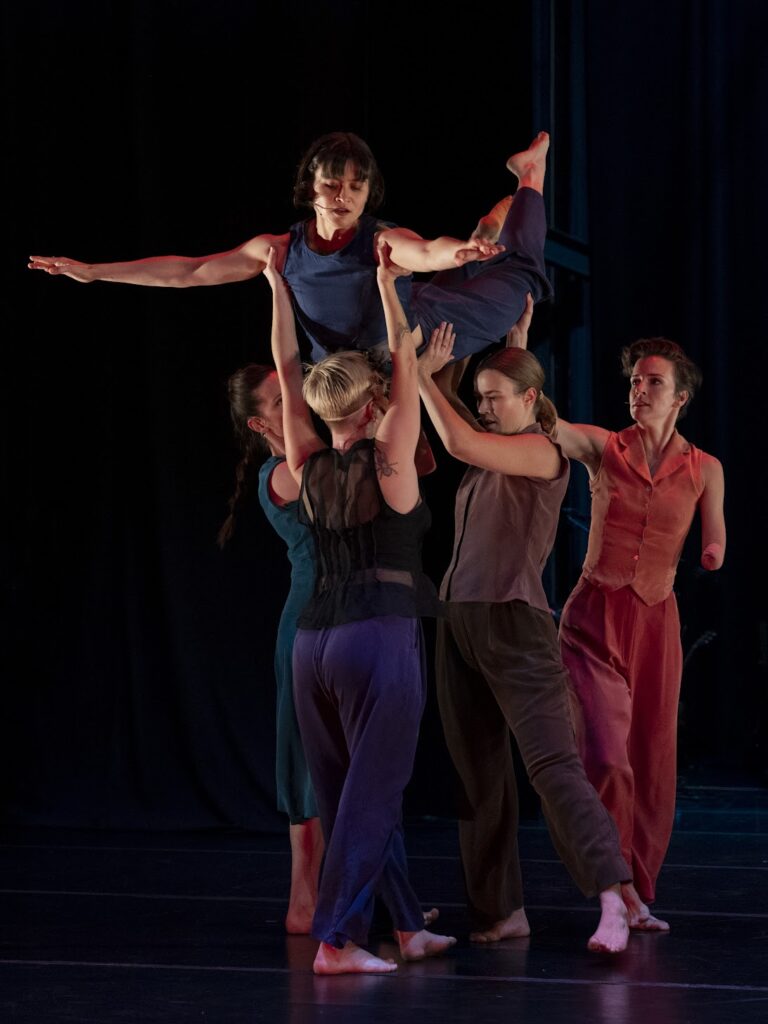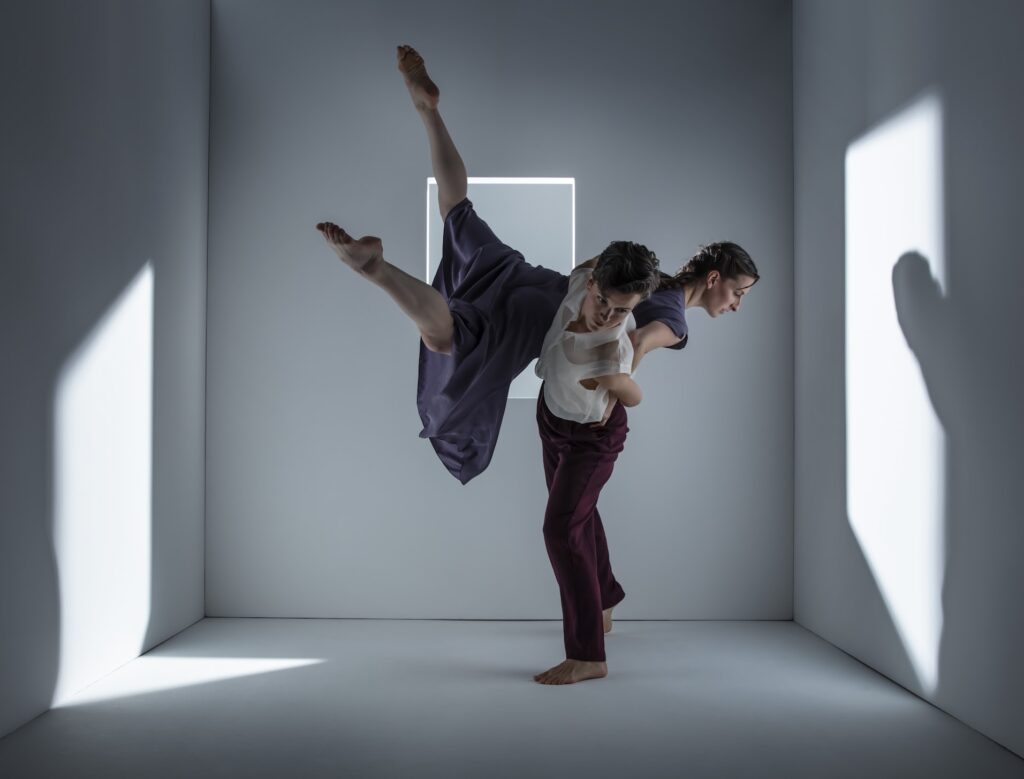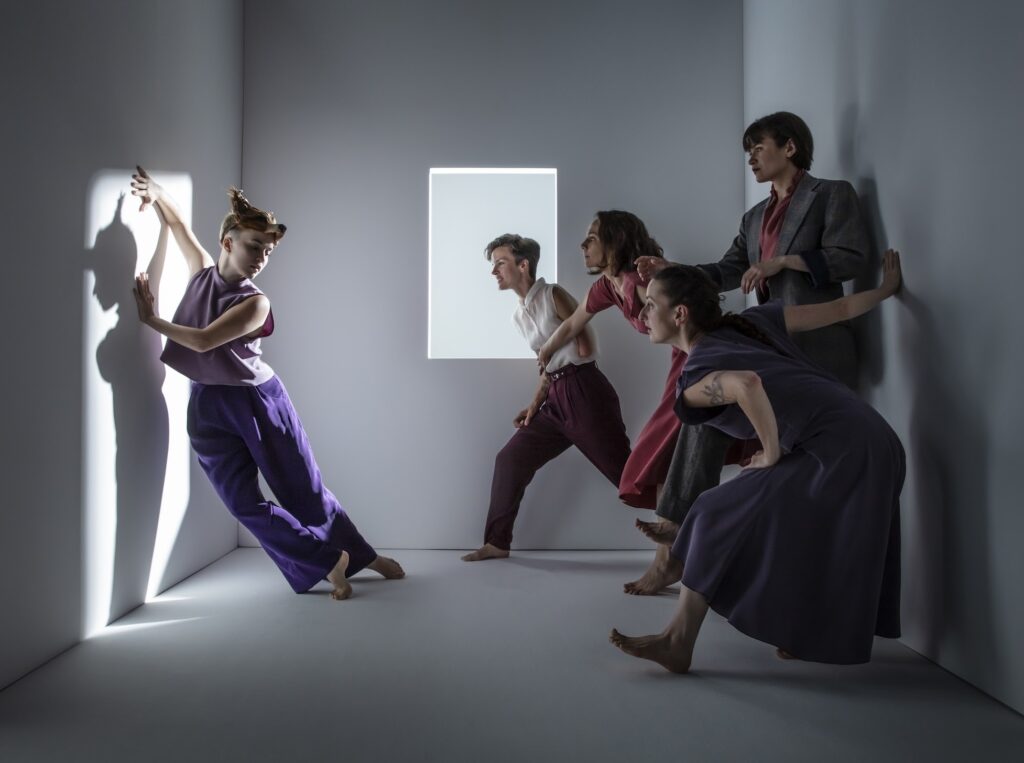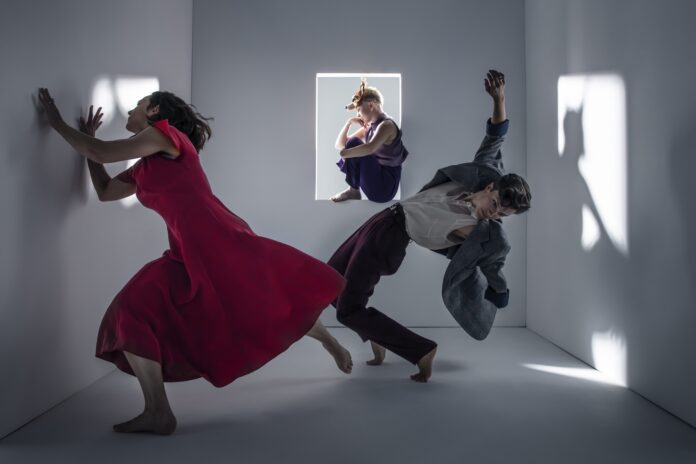This was a show that began with the audience being given a quickie primer on detective stories. We’re told that there are four basic requirements: 1) there must be a mystery; 2) there must be an inspector; 3) there must be someone responsible; and 4) the mystery must be solved by the inspector. Not exactly Knox’s Ten Rules (our very conducive to Hercule Poirot), but likely influenced by them. We were told these four rules and infer that the 90-some-odd-minute show we were about to watch would either adhere to the rules dogmatically or deconstruct them irreverently. By the end, I’m pretty sure folks behind the Sharp & Fine company hoped we’d forgotten the rules entirely.
The truth is, the deceptively-named A Detective Story, whose world premiere ran from October 18–20 at Z Space, has almost nothing to do with the conventions of its titular genre. Sure, its lead character investigates a mystery and appears to have some sort of office allowing her to do it professionally, but it’s almost more like a hobby that’s become an all-consuming obsession. She admits to falling into the work due to her love of the literary detective genre and the fact that she’s “naturally suspicious”.
None of the characters are named, but our Bay Area gumshoe (Hadassah Perry, adorned in anachronistic trench coat and fedora) becomes aware of the disappearance of a blonde woman (Charmaine Butcher)—because it’s almost always a blonde. As she sets out to find the blonde, our dogged detective first questions a domestic couple (Catilin Hicks and Molly Levy) before encountering “an interested party” (Julie Crothers) who claims to know what happened. According to this interested party, she fell in love with the missing woman and gave her a kiss, which transformed her into a monster. So, there’s that.

That’s about as much as you’ll get for the proper mystery angle of the story. The rest is dedicated to relationship complications. Primarily, the focus is on the expanding rift between the aforementioned couple, whose daily routine has become so monotonous that one of them (Levy) goes out searching for anything spontaneous. We also see our inspector struggle to maintain a marriage with her oft-neglected spouse (played by a member of the audience). Saddest of all, we learn of the interested party’s murky history with maintaining relationships knowing they’ll inevitably end with a literal curse. And yes, we also follow the now-monstrous missing woman.
You may not know it from that description, but A Detective Story is a dance piece. Devised by the performers with co-directors and Sharp & Fine co-founders Megan & Shannon Kurashige, the modern dance choreo not only works for the introduced supernatural element of the show, but also in illustrating the daily habits of the characters. When the inspector asks the couple what they were doing when the missing woman disappeared, they recall—through dance—their banal routine of sitting on the sofa, reading the paper, barely speaking. It’s a sequence that’s surprisingly visceral in how well it captures the grooves into which long-term couples fall when they each take for granted the mere presence of their partner.

Likewise, the recreation of the interested party’s relationship with the missing woman begins as a seductive tête-à-tête that turns into a sad fairy tale (like the original Hans Christian Andersen version of “The Little Mermaid”), complete with beastly transformation, though costumer Emily Kurashige’s fuzzy domino mask is more flamboyant accessory than terrifying body horror.
That’s what makes the show confounding: Why the pretense of a detective mystery in the first place? This being my first Sharp & Fine show, I can’t say how typical this is of their usual output (they had a very large fanbase on hand for opening night), but it’s pretty bait-and-switch to suggest a noir-ish homage, even one with a supernatural twist, only for the actual show to be a relationship drama in which the main “mystery” plot is just window dressing.

Setting a detective mystery in the Bay Area makes perfect sense, as there have been so many set here that it’s the home of the Film Noir Foundation and their Noir City Film Fest. Telling the narrative through dance is a novel approach and the supernatural element isn’t as out-of-place as one would think. It’s just that so much has gone into aesthetic elements that not much care was put into the story—the characters, yes, but not the proper story promised by the title. The result is an intriguing and sad meditation on how easy it is for relationships to go wrong. But what that has to do with the genre of Dashiell Hammett is the one case they don’t solve.





